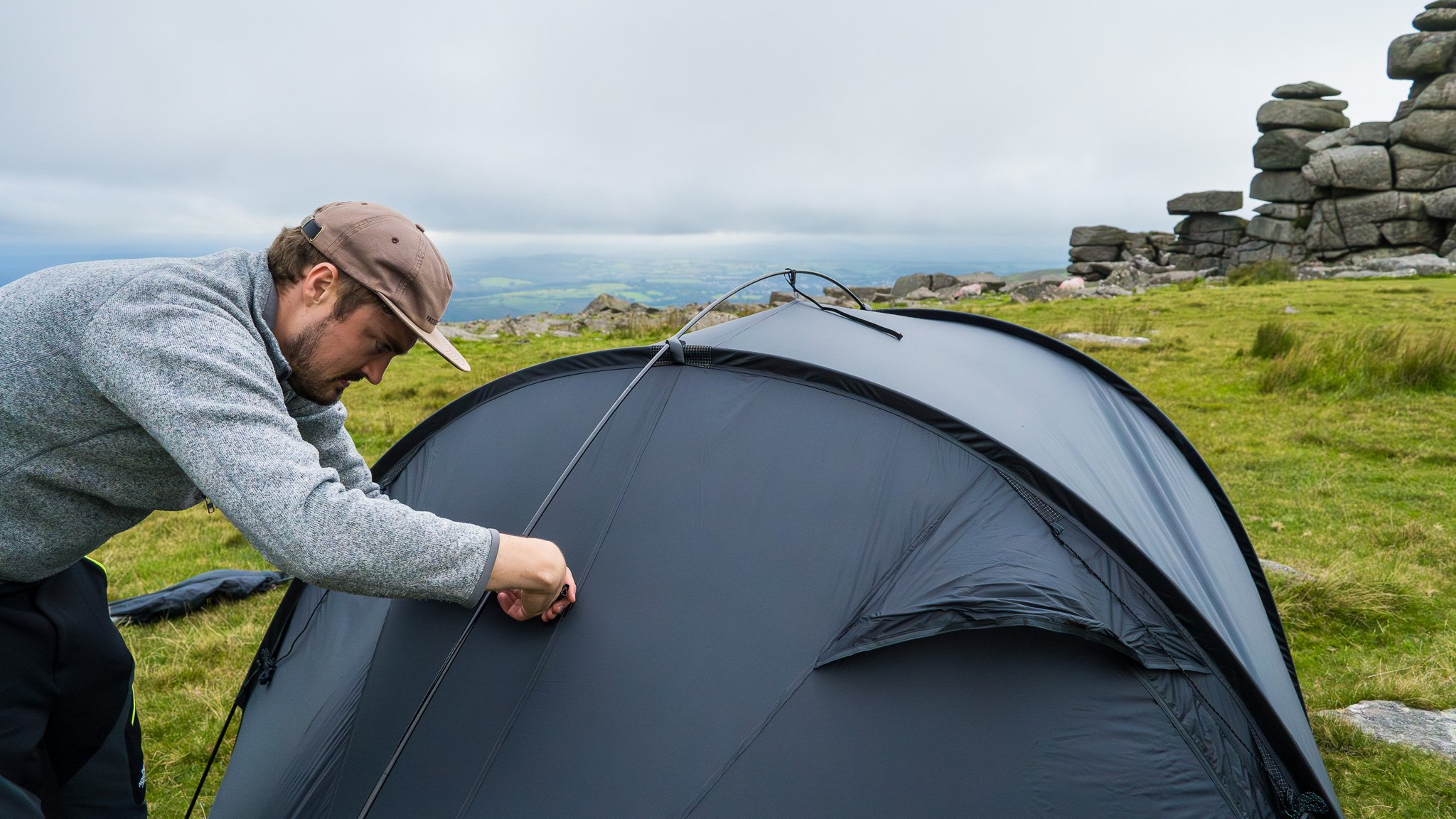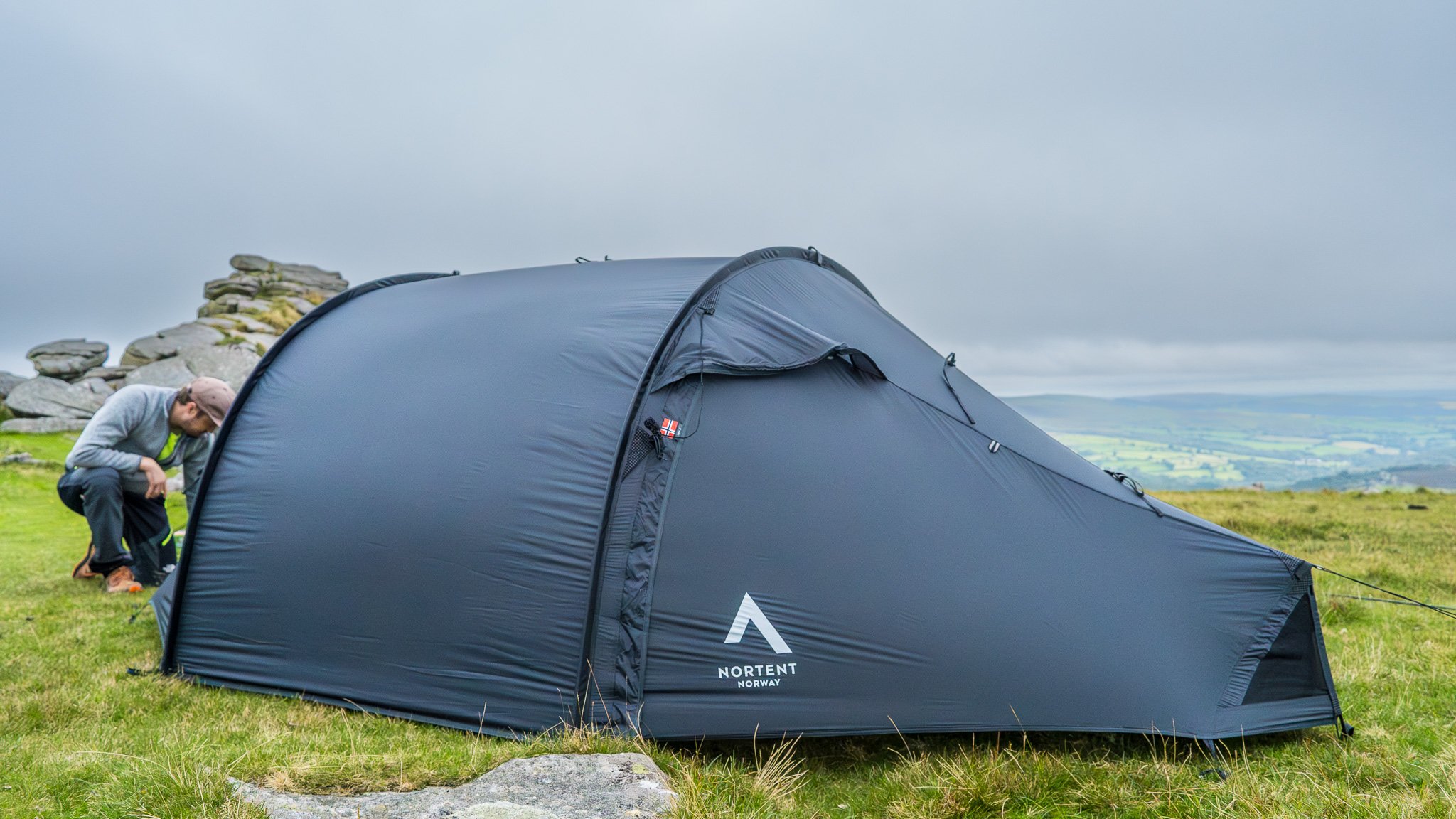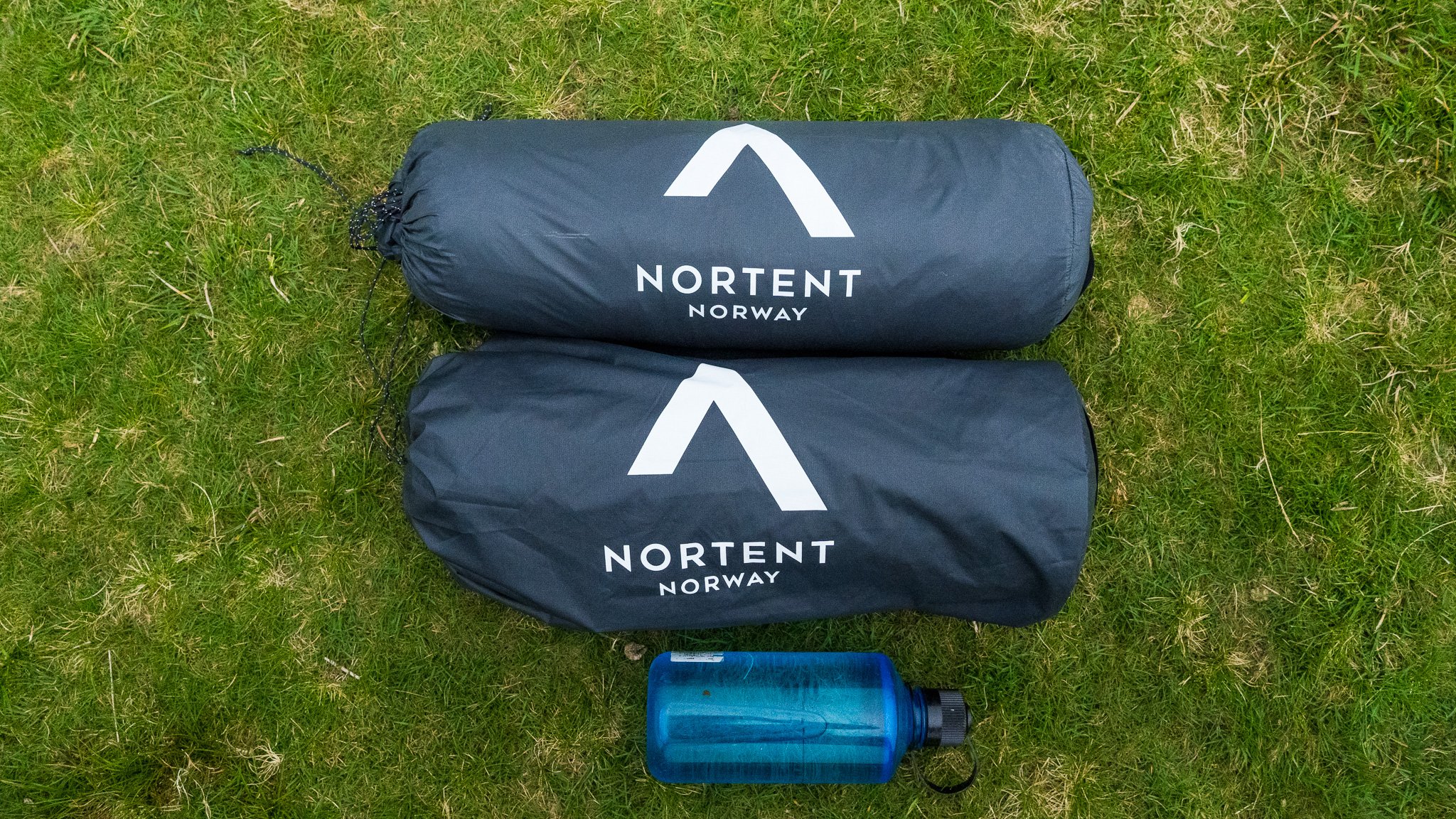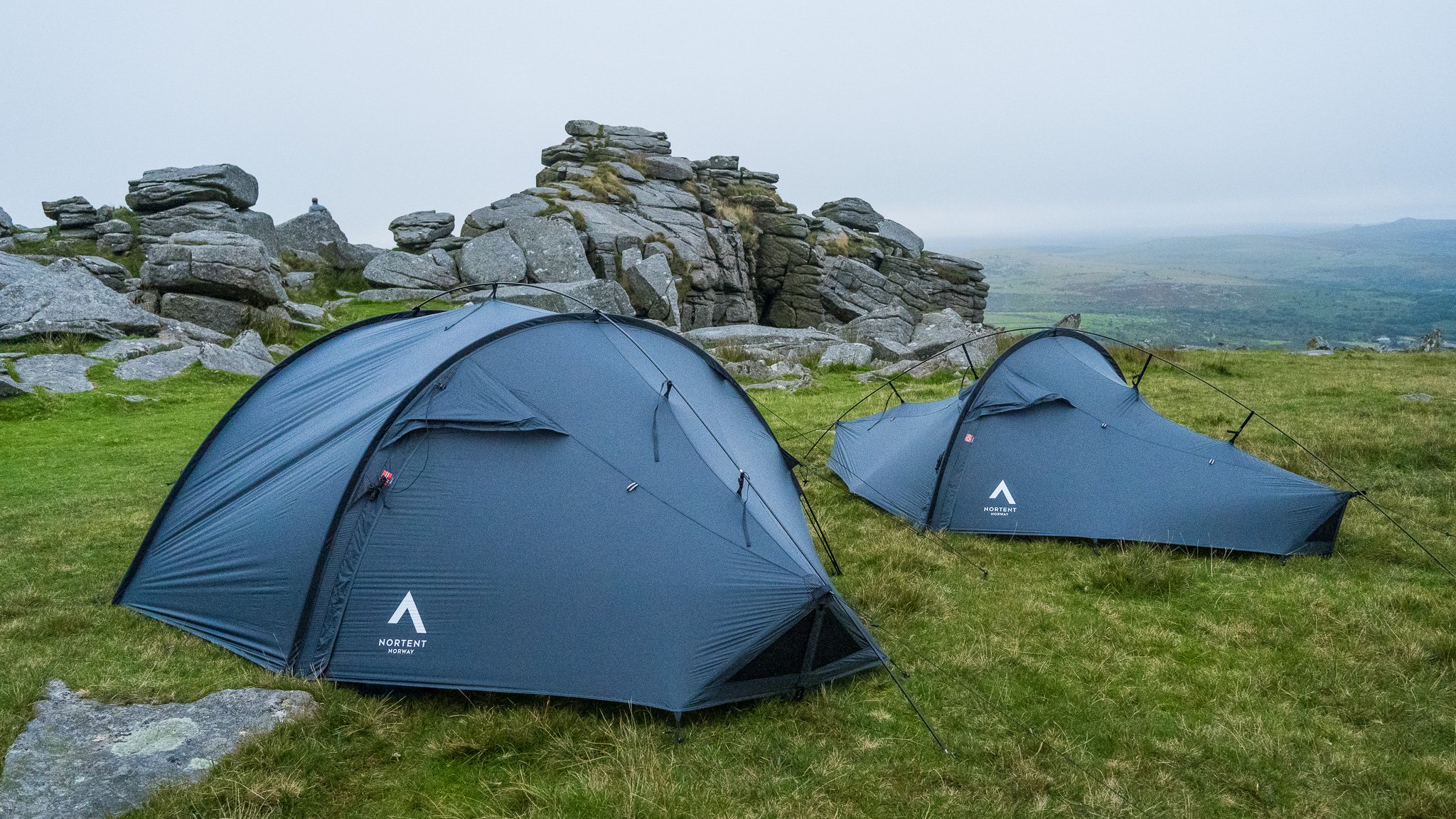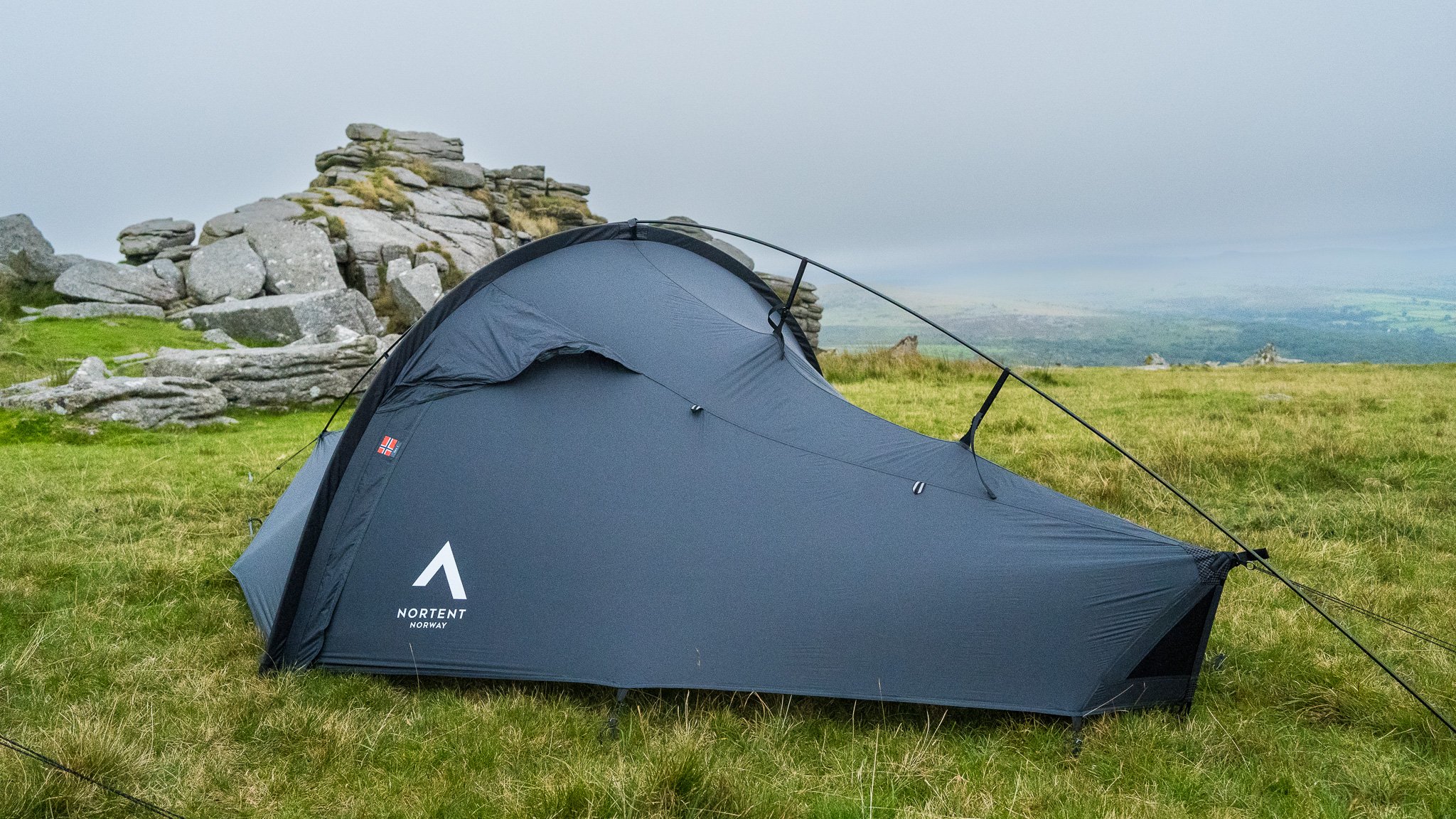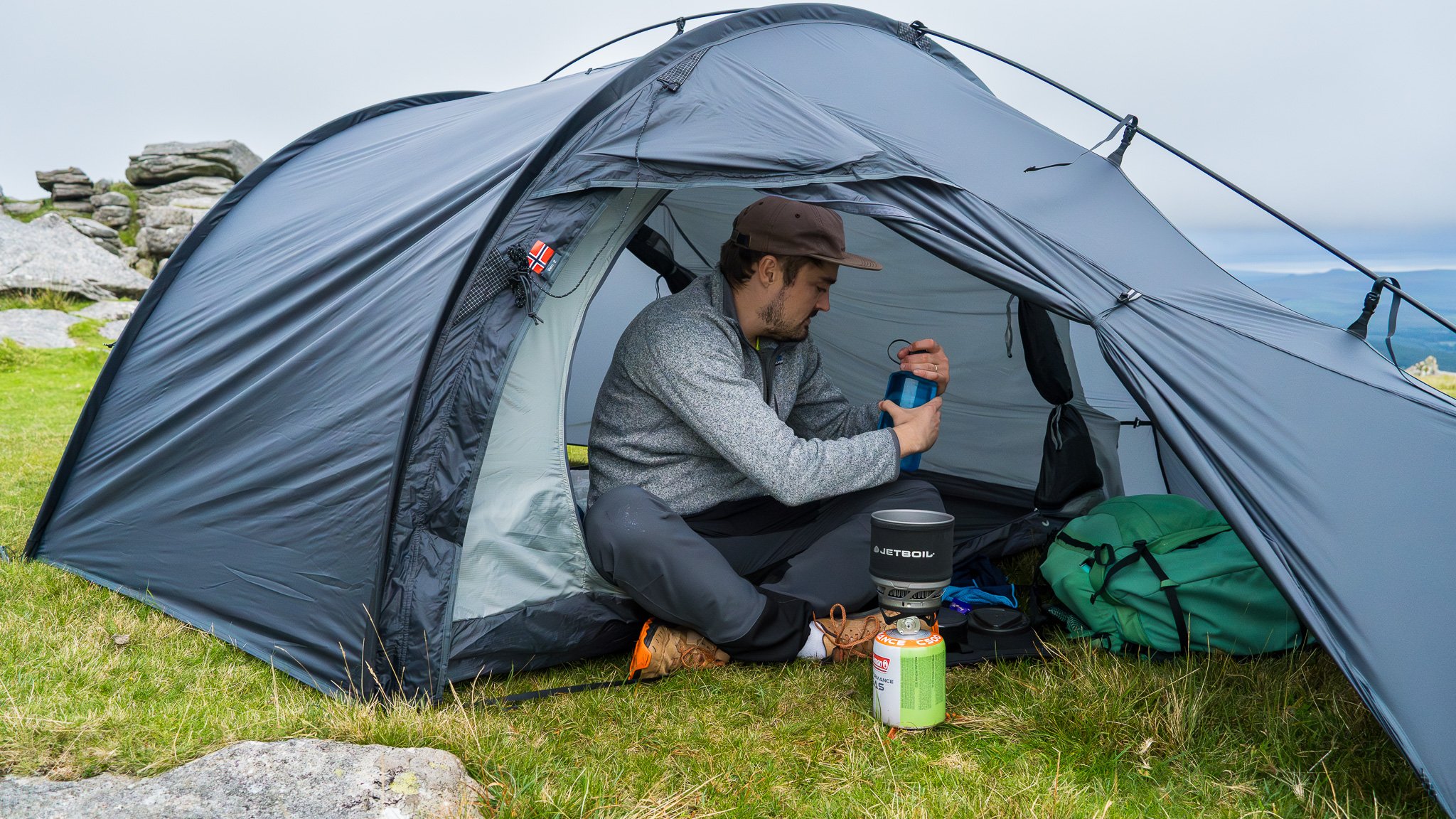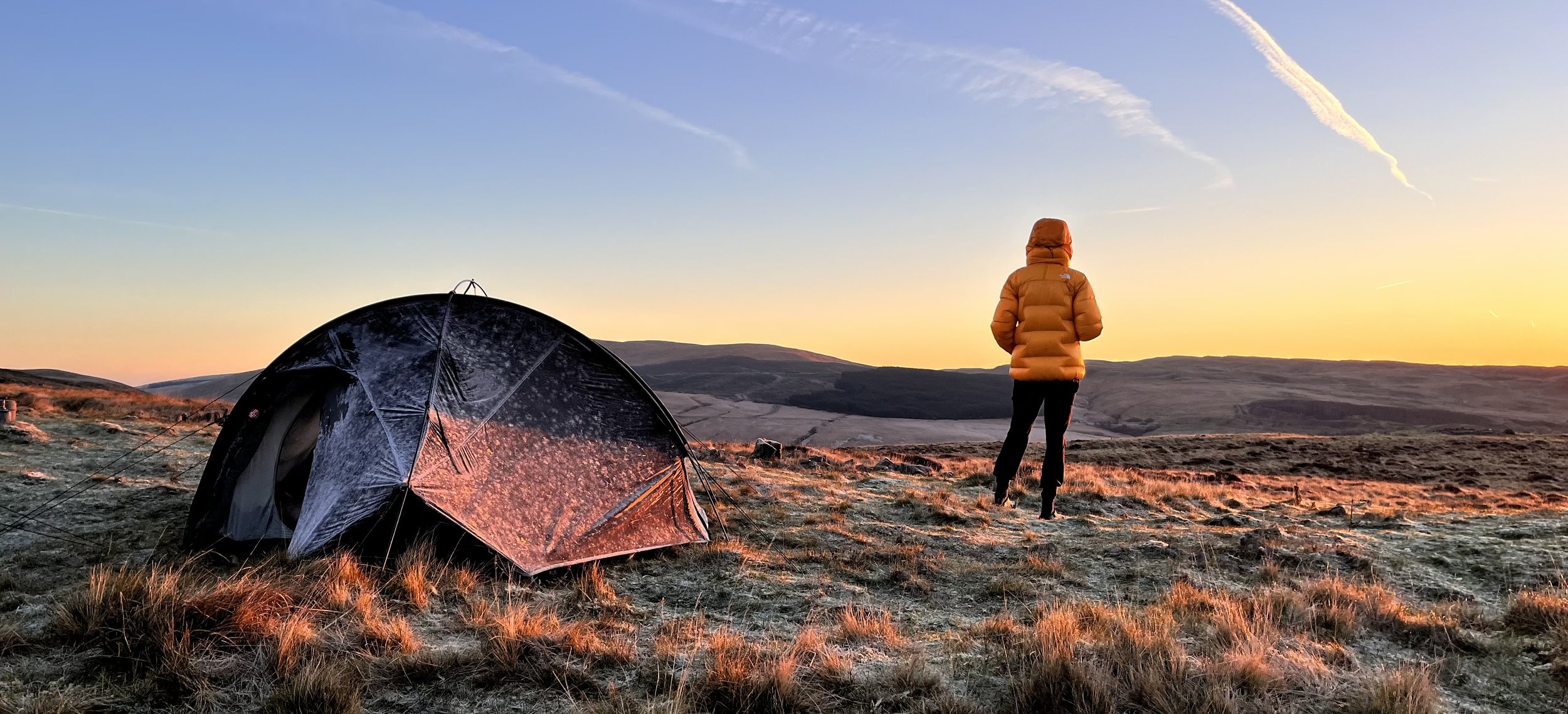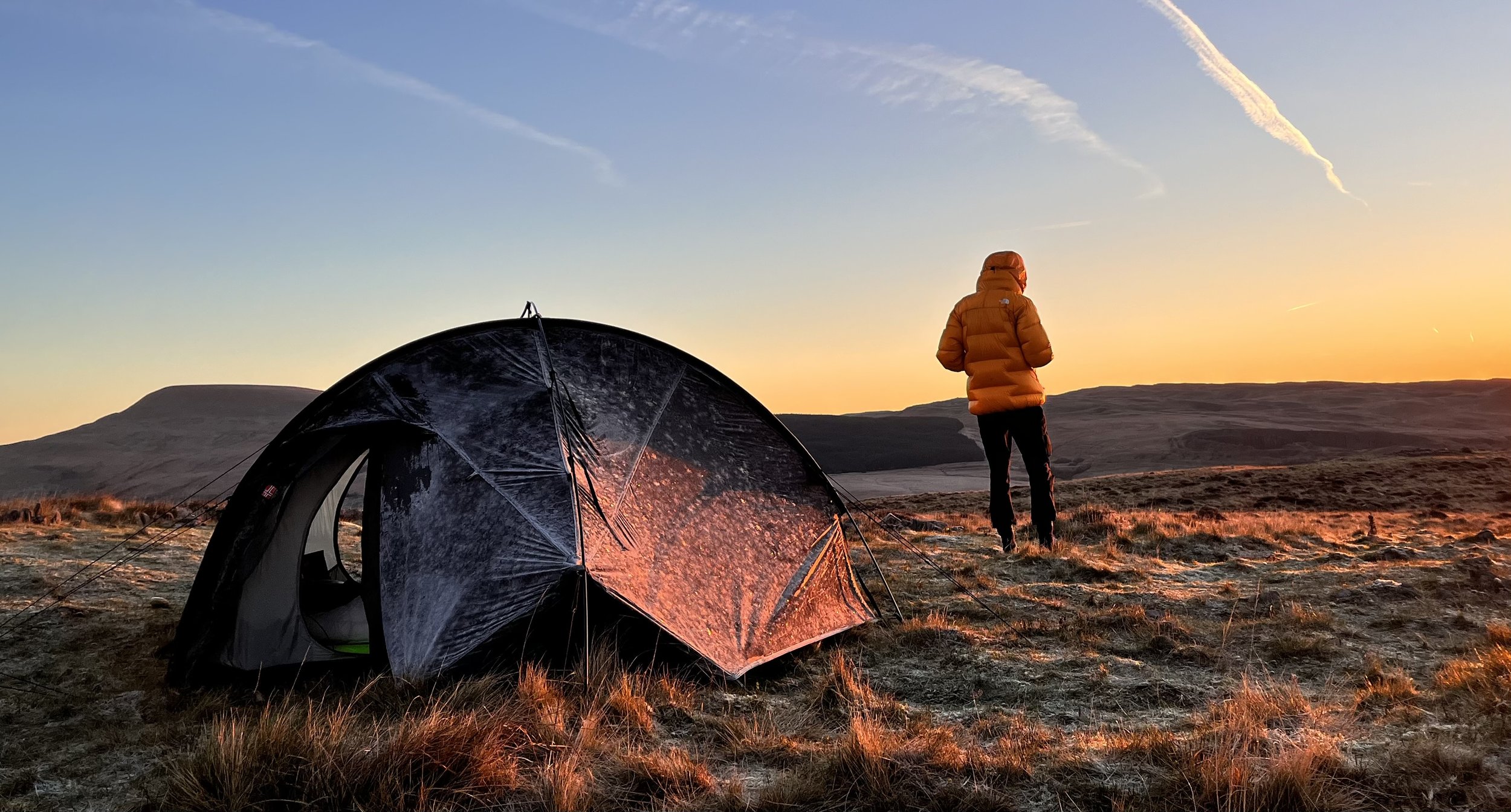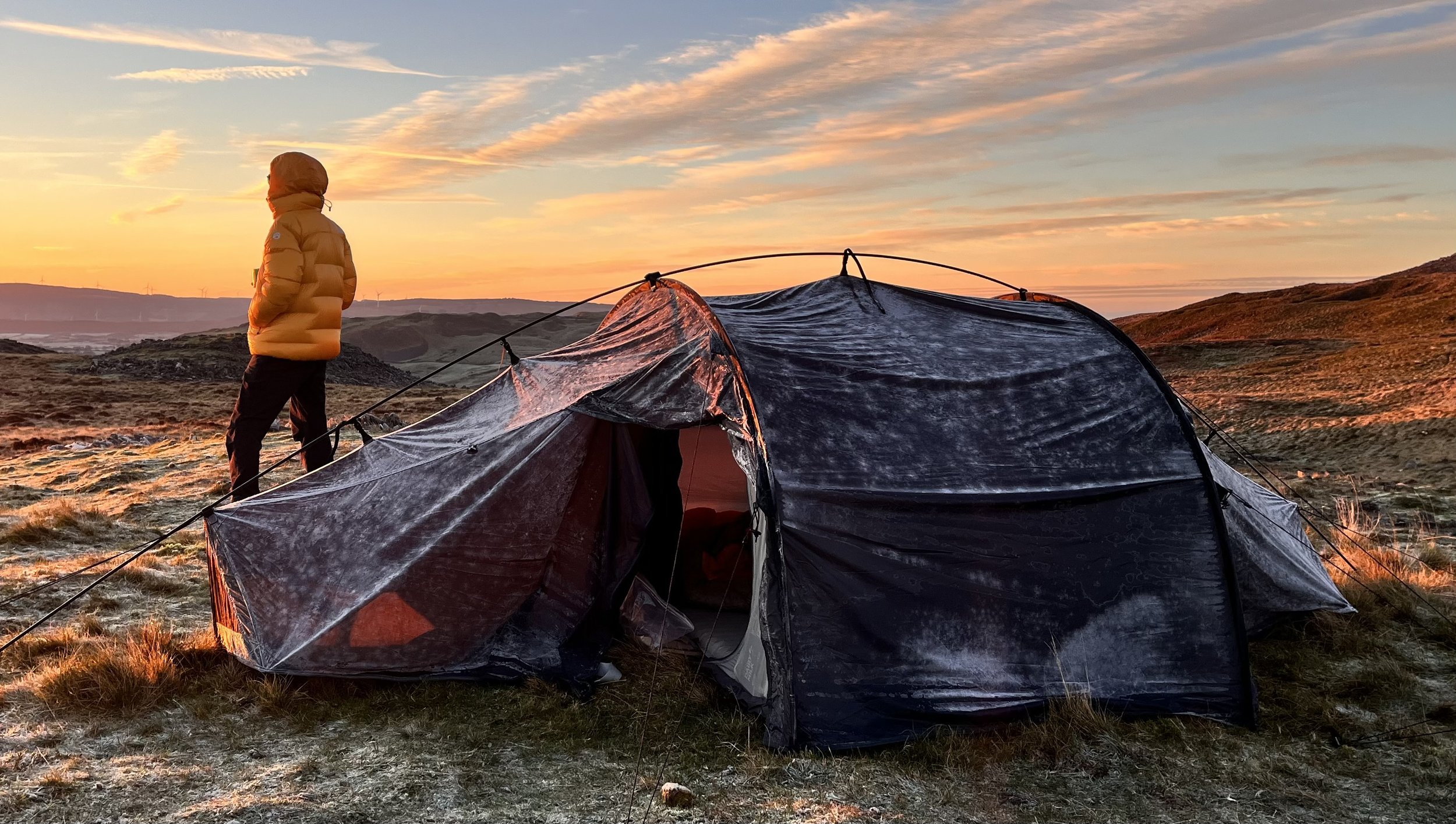The Nortent Vern 1 versus the Vern 2
The Vern series from Nortent doesn’t conform to industry stereotypes around 1 and 2-person tents — especially when it comes to the amount of space each tent gives you. And with no brick-and-mortar stores stocking these for test pitching before purchasing in the UK, knowing which to go for can be a tough call. To help you decide, here are the primary differences according to our experience.
The Nortent Vern Series
Nortent’s line of Vern tents are some of the most innovative and user-friendly 4-season tents we’ve ever tested. If you’re not familiar with them, we’ve reviewed the one-person model here and the two-person model here. In this article, we’re looking at the main differences between the 1 and 2-person versions to help you understand which you should purchase for use on your next big adventure in the UK.
The pack sizes of the Vern 1 and Vern 2 with a 1 litre Nalgene bottle for reference
What makes the Vern series special?
Nortent’s Vern series is - in our opinion - one of the most innovative tent lines in recent years. The Vern tents toe the line between weight, durability and packability so well that they become legitimate four-season tents — shelters that you can use on both a gentle summer’s evening on a campsite or atop of Ben Nevis in a mid-winter blizzard (not like we’d actually want to do that…). The tents work just as well on long-distance bikepacking trips when weight is a premium as they do on rougher backpacking trips when you’ve no idea what weather to expect. And it was this myriad of demands that Nortent sought to satisfy when they designed the Vern 1 and 2. Kjetil, Nortent’s chief designer and the brains behind the Vern series told us, “It’s not difficult to make an ultralight tent. It’s difficult to make a tent that’s both ultralight and superstrong That’s almost impossible.”
To solve this problem, the flysheets on Vern series are made out of a high-quality and durable 20D silnylon fabric. And while that’s not groundbreaking in itself (many brands use similar materials and thicknesses), the added crossing pole that sits along the spine of the Vern tents makes all the difference. Weighing 180 grams, it adds tension to the flysheet and turns the tents into freestanding structures, and really makes the tents solid 4-season structures capable of butting of big gusts and easily handling normal UK levels of snow load.
And we’ve got good news. Nortent never sees their tents as completely finished products: Kjetil listens intently to feedback from the community and is committed to improving the function of the crossing pole on the next round of Vern tents. So watch this space for updates through 2024.
The differences between the Vern 1 and the Vern 2
When you look at most tents, the difference between the 1-person and 2-person models is almost always size: The 1-person is tiny, barely big enough to fit one person and kit inside, whereas 2-person models are moderately larger. Still, the ‘2-person’ extension rarely ever means that, referring more to the fact that you could sleep two in here at a push. Much like sleeping bag ratings and their generous temperature indicators, ‘2-person’ more often than not simply means that it’s doable at a push — just don’t expect to be comfortable.
Nortent’s Vern series throws this approach out of the window, however. The Vern 1 is a gigantic tent for 1 person, offering more than enough room for 1 person and kit. And the Vern 2 is no different: We’ve actually tried sleeping three people in ours, and even though it got a little cramped, the generous vestibules gave us more than enough space for three sets of kit, while the wide inner meant that three people could lie down alongside each other comfortably enough that it’s still possible to get some sleep.
Therefore, if you’re planning on buying the Vern 2 for use for you and your kit; don’t. Go for the Vern 1. We promise you’ll be more than comfortable inside that, unless you’re over 6 ft 7”. The Vern 1’s generous vestibule also offers all the space you need to store more 4-season gear that you can reasonably carry.
The Nortent Vern 1 on a beautiful summer’s wildcamp.
The Vern 2: A 2-person tent that delivers on its promises
If you always camp with a friend or partner, you’d be better served going for the Vern 2. This huge tent is easy to erect and comes with two giant vestibules on either end. Equally sized, there’ll be no quarrelling about who gets to sleep next to the big door as the design is symmetrical from either end. What’s more, as the vestibules are so large, you can comfortably sit up in one and use it as a kitchen-space for cooking and preparing food and store all of your gear (both yours and your bedmate’s) in the other vestibule. Seriously, the vestibules on the Vern 2 are so large that if you were taking one of the wheels off, you could easily fit a bike in either one (or even stack 2 on one side). This makes the Vern 2 a surprisingly great choice for couples who bikepack, even if a durable 4-season tent might not feel like it would be your first choice for this sort of adventure.
The Nortent Vern 2 on a frosty winter’s morning.
So, which tent fits which use case?
To better understand which you could go for, let’s have a look at some examples. As ever, these are merely suggestions based on our own experience, and we’d recommend you reach out directly to the folks at Nortent if you’re still not sure which shelter is the best for you.
-
If you’re doing a long-distance thru-hike with a friend and you plan on sleeping in separate shelters, go with the Vern 1. It’s small and light enough that you can comfortably carry it over distance, and due to the space inside, you could squeeze in an extra body in a survival situation (just don’t expect to have a very comfortable night’s sleep). To give yourself more options on where you pitch, pack the crossing pole.
-
If you’re doing a long-distance bikepacking trip where weight and packsize is at a premium, take the Vern 2. You can easily store your bikes in the vestibules overnight (if you take the wheels off). Leave the crossing pole if you’ll mostly be camping on sheltered campsites.
-
If you’re doing a real winter adventure over a few days on your own, take the Vern 1. It offers more than enough space for all of the winter kit one person can carry, while still being light and small enough to easily carry over many miles. Take the crossing pole for added versatility, allowing you to pitch in much more exposed locations.

